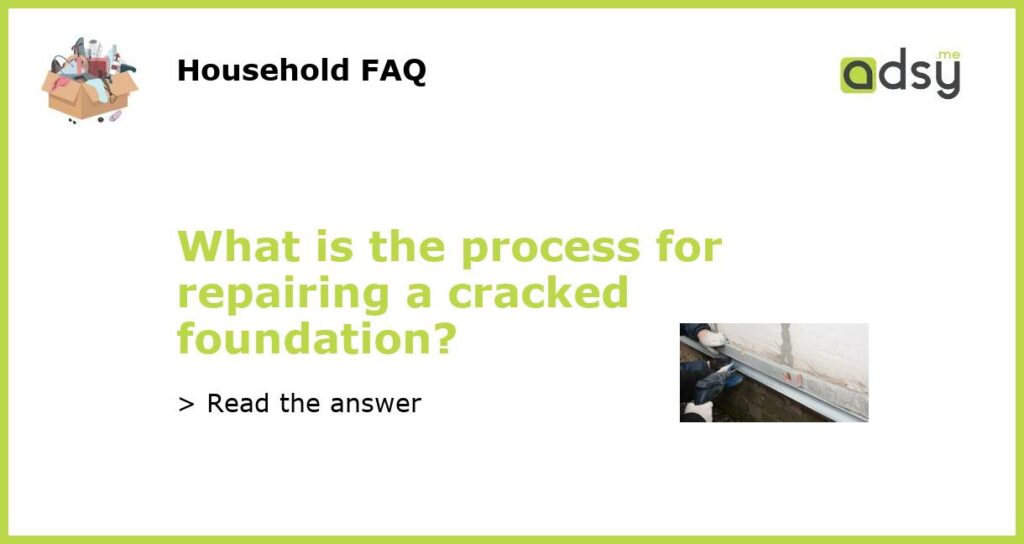The Importance of Repairing a Cracked Foundation
A cracked foundation is a serious issue that should not be ignored. Over time, cracks in a foundation can lead to significant structural damage to a building. Repairing a cracked foundation is essential to ensure the stability and safety of a structure. The process for repairing a cracked foundation involves several steps that should be carried out by professionals with experience in foundation repair.
Step 1: Assessing the Damage
The first step in repairing a cracked foundation is to assess the extent of the damage. A professional foundation repair contractor will inspect the cracks and determine the underlying cause of the damage. The assessment may involve checking for signs of soil movement, water damage, or poor construction practices. This step is crucial as it allows the contractor to develop an appropriate repair plan.
Step 2: Stabilizing the Foundation
Once the damage has been assessed, the next step is to stabilize the foundation. This may involve various methods depending on the type and severity of the crack. Common stabilization techniques include installing steel braces, helical piers, or underpinning the foundation. These methods help prevent further movement and provide support to the existing foundation.
Step 3: Filling and Sealing the Cracks
After stabilizing the foundation, the next step is to fill and seal the cracks. This is done to prevent water intrusion, further damage, and to restore the structural integrity of the foundation. The contractor will use an appropriate material, such as epoxy or polyurethane, to fill the cracks. This material is designed to expand and contract with the foundation, ensuring a long-lasting repair.
Step 4: Addressing the Root Cause
Repairing the cracks in a foundation is just the first step. It is equally important to address the root cause of the damage to prevent future issues. Common causes of foundation cracks include poor drainage, expansive soil, plumbing leaks, and improper construction practices. The contractor will identify the underlying cause and take appropriate measures to rectify the problem. This may involve installing drainage systems, fixing plumbing leaks, or implementing proper grading techniques.
Step 5: Monitoring and Maintenance
Once the foundation has been repaired, it is important to monitor its condition and perform regular maintenance. This includes inspecting the foundation for any signs of new cracks, monitoring the moisture levels around the foundation, and addressing any maintenance issues promptly. Regular maintenance will help ensure the long-term stability of the foundation and avoid costly repairs in the future.

